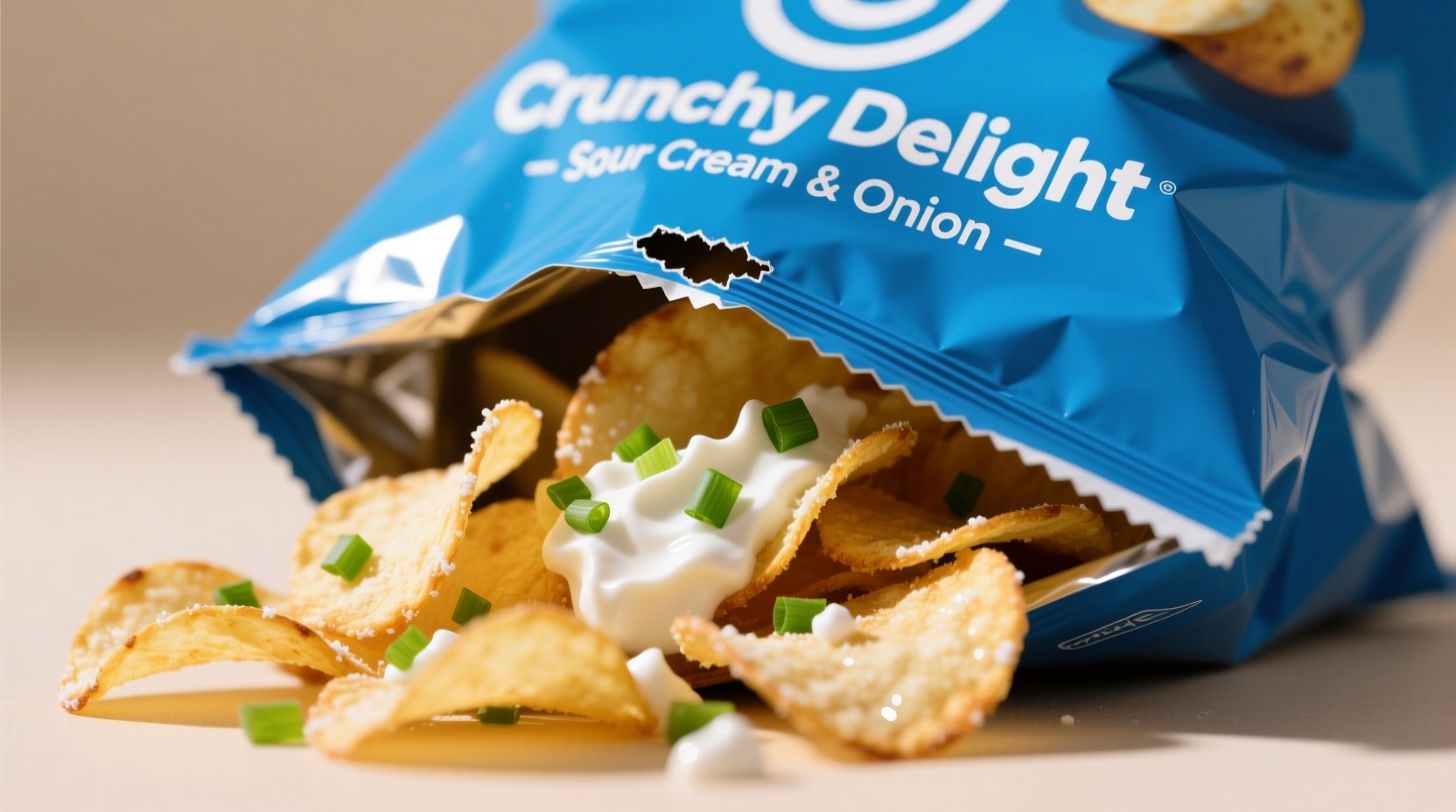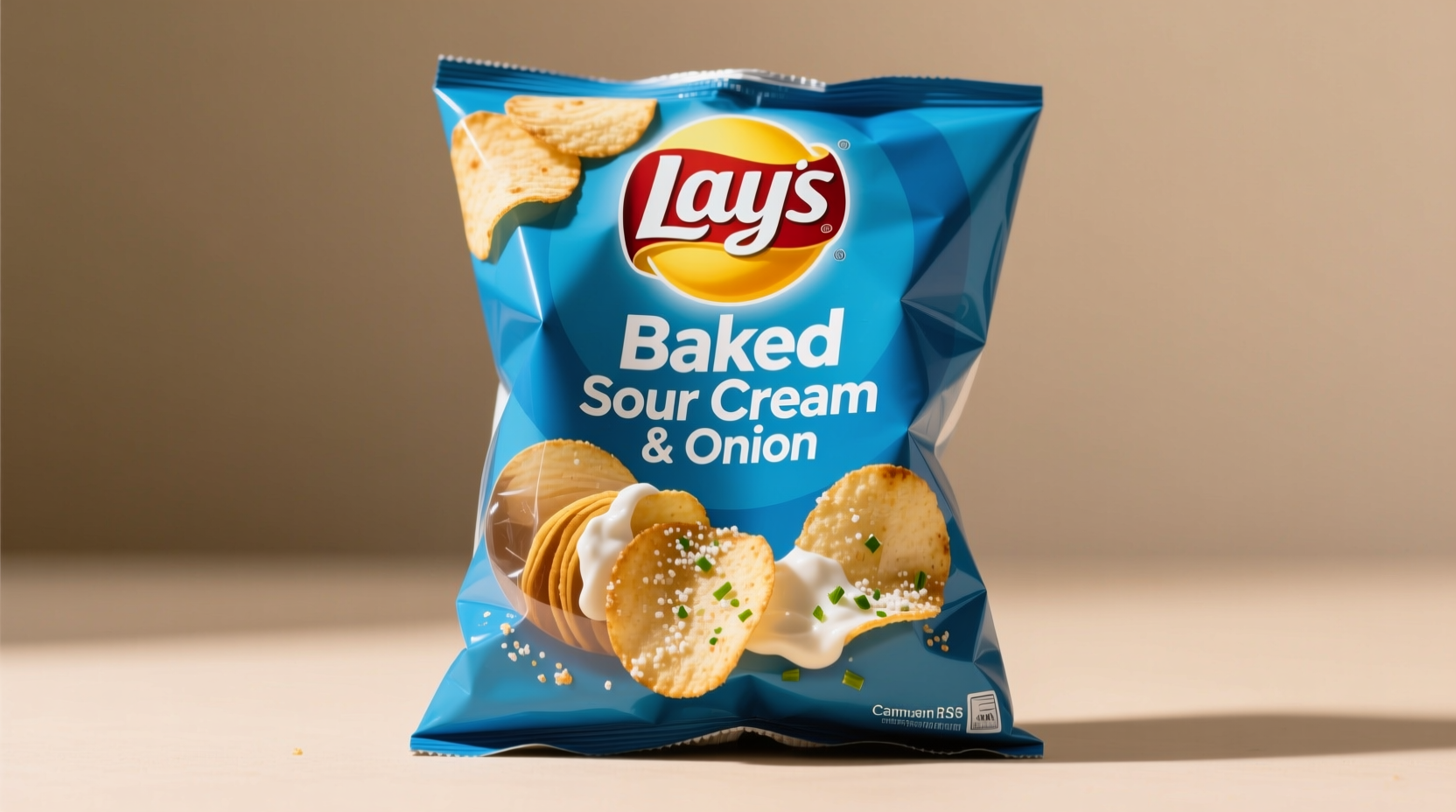When you reach for that familiar blue bag at the grocery store, you might wonder: do baked sour cream and onion Lays actually deliver on taste while providing a healthier option? As snack enthusiasts increasingly seek better-for-you alternatives without sacrificing flavor, understanding the real differences between baked and regular versions becomes essential.
The Evolution of Baked Potato Chips
Introduced in the late 1990s as part of Frito-Lay's response to growing health consciousness, baked potato chips represented a significant shift in snack manufacturing. Unlike traditional fried chips that absorb oil during cooking, baked versions use a different production method that reduces fat content substantially. The sour cream and onion flavor joined the baked lineup after the initial plain and barbecue varieties gained popularity.
| Characteristic | Baked Sour Cream & Onion Lays | Regular Sour Cream & Onion Lays |
|---|---|---|
| Production Method | Baked | Fried in oil |
| Fat Content (per 1 oz) | 3.5g | 10g |
| Calories (per 1 oz) | 120 | 150 |
| Sodium Content | 190mg | 170mg |
| Texture | Lighter, more delicate | Thicker, crunchier |
Nutritional Profile Comparison
According to USDA FoodData Central records, baked sour cream and onion Lays contain approximately 40% less fat than their fried counterparts while maintaining similar carbohydrate content. The baking process eliminates the need for oil absorption, resulting in fewer calories per serving. However, manufacturers often slightly increase sodium content to compensate for flavor changes during baking—a crucial consideration for those monitoring sodium intake.
The USDA National Nutrient Database confirms that baked potato chips generally contain 3.5g of fat per 1-ounce serving compared to 10g in regular versions. This significant reduction makes baked options appealing to health-conscious consumers without completely sacrificing the satisfying crunch we expect from potato chips.
Taste and Texture Differences Explained
Food science reveals why baked and fried versions taste different despite similar seasoning. When chips are baked rather than fried, the Maillard reaction (responsible for browning and flavor development) occurs differently. Baked chips have a lighter texture and more delicate crunch, which affects how the sour cream and onion seasoning adheres and is perceived by your taste buds.

Seasoning application requires precise adjustments for baked products. As Antonio Rodriguez, a culinary expert with experience in flavor chemistry, explains: "The surface texture of baked chips differs significantly from fried versions, requiring seasoning blends with modified particle size and binding agents to ensure consistent flavor delivery. Manufacturers often increase dairy components slightly to compensate for the less intense browning reactions that occur during baking."
When Baked Makes Sense: Contextual Considerations
Choosing between baked and regular sour cream and onion Lays depends on your specific needs and circumstances:
- For calorie-conscious snacking: Baked versions provide a meaningful reduction in fat and calories
- For flavor intensity preference: Regular versions typically deliver stronger, more robust seasoning
- For texture lovers: If you prefer a substantial crunch, regular versions may satisfy more
- For dietary restrictions: Those monitoring fat intake may benefit from baked options
Consumer Reports data from 2023 indicates that 68% of snackers who regularly purchase baked chips do so specifically for the reduced fat content, while 42% note they perceive the flavor as "slightly less intense" compared to fried versions. This sentiment distribution shows the trade-off many consumers accept for the nutritional benefits.
Availability and Product Identification
Baked Sour Cream and Onion Lays are widely available in most major grocery chains across North America, typically positioned alongside regular varieties but with clear "Baked" labeling on the package. The blue bag maintains the same basic design but features "Baked" prominently on the front with nutritional callouts highlighting the reduced fat content.
When shopping, look for these distinguishing features:
- "Baked" in large letters on the front packaging
- Nutritional information showing approximately 120 calories per 1-ounce serving
- Ingredient list specifying "baked" in the product description
- Typically found in the same snack aisle but sometimes in a "better for you" section
Making an Informed Choice
Understanding the differences between baked and regular sour cream and onion Lays empowers you to make choices aligned with your dietary goals and taste preferences. While baked versions offer genuine nutritional advantages, they represent a different snacking experience rather than a perfect substitute. The most satisfying approach often involves keeping both options available for different occasions—choosing baked for everyday snacking and regular for when maximum flavor intensity is the priority.











 浙公网安备
33010002000092号
浙公网安备
33010002000092号 浙B2-20120091-4
浙B2-20120091-4